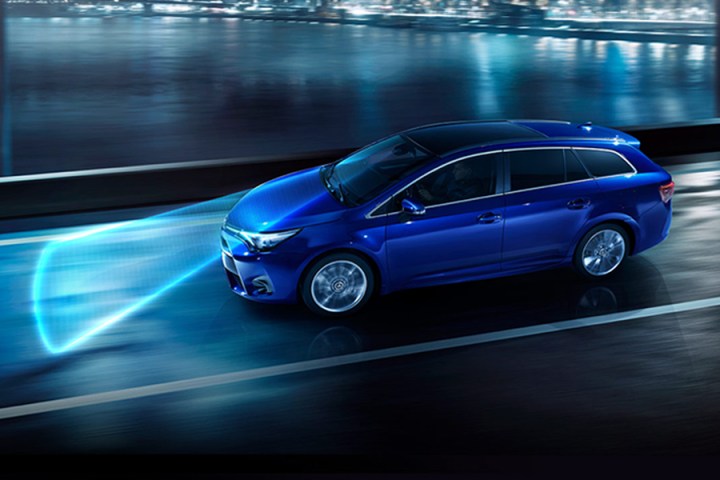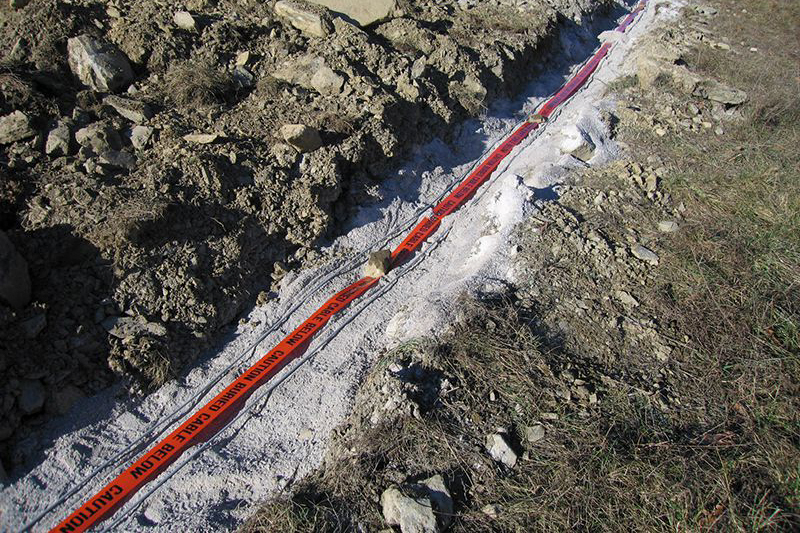
There are more than one million animal-vehicle collisions every year in the United States, and about 200 human deaths attributable to collisions with deer alone. Property damage from these accidents exceeds $1 billion annually. These accidents are so common that transportation safety agencies have an acronym for them: DVC (Deer-Vehicle Collision).
Obviously, for human and animal safety alone, this is an important issue, and one with significant challenges. Animal reactions are hard to predict, so human drivers often cannot reliably swerve to miss an animal, even if they see the danger in time to react. Animals in the roadway also pose a unique challenge to advanced automobile safety systems and the budding autonomous driving technology.
Animal detection
To try and reduce the risk of collisions, researchers at Virginia Tech have been working on technologies to alert drivers to the potential for animals in the roadway.
“When something crosses the cable, it will let you know where it crossed … and how big it was.”
“Our work is focused on the kind of technologies that are being placed in automated vehicles, and along with roadside, that can be used to detect animals,” says Andrew Alden of Virginia Tech. “We’ve had at least two projects now to look at both roadside and in-vehicle technologies for animal detection.”
The technology for roadside detection is fairly simple. A “leaky” microwave cable is buried in the ground along the shoulder of roads with a high DVC occurrence. When an animal crosses the shoulder, the magnetic field of the cable is disturbed by the water in the animal’s body, triggering an alert.
“The roadside stuff is based on some Department of Defense systems that were developed for perimeter security at their installations,” Alden says. “When something crosses the cable, it will let you know where it crossed along that length and how big it was, to some degree.”
The idea is that the signal would trigger Automated Traffic Management technology, which can display a message at the roadside, or even transmit a message into the car.
“The old model of dealing with that detection would be to put up a flashing light at the roadside that would say, hey there’s an animal on the road ahead, slow down,” Alden says, “but we’re looking more towards the future where connected vehicles become more prevalent, where vehicles talk to other vehicles and then talk to infrastructure. When we have that ability, we will be able to have that equipment at the roadside connect to the network and then the system turns around and issues an alert to any vehicles that are approaching that area. They would receive an in-vehicle warning saying that there are animals on the roadside ahead.”
Crowd-sourcing animal information
Another possibility is to combine the animal detection system with crowd-source information sharing similar to that used for accidents and slowdowns on apps like Waze.
We’re looking to the future, where vehicles talk to other vehicles and then talk to infrastructure.
“Really we’re looking in two areas,” Alden explains. “We’re looking at the sensors that are placed on vehicles or on the roadside, but we’re also looking at how this connectivity provides opportunities for dealing with animals. But humans are actually great sensors, and they are even starting to enter animals into Waze now, though it’s usually dead animals on the side of the road.”
The idea is to allow drivers to report animals in or near the roadway, and to get that information to other nearby drivers.
“If they pass by an animal or almost hit one, they can get that information shared with the rest of the drivers in the area through the connected vehicle system, and then the human becomes the sensor in that case.”
Taking that a step further, your next car may automatically detect and report animals without any action from you.
“What’s been looked at is how can we take some of the sensors that we need for automatic driving and perhaps use that to detect animals on the roadway,” Alden says.
The same radar, cameras, and ultrasonic sensors used to implement lane keeping and adaptive cruise control can also detect animals in danger. In addition to preparing your car to avoid a collision, your car could initiate V2I (Vehicle to Infrastructure) or V2V (Vehicle to Vehicle) communication to warn other cars of the hazard.
It’s not only about animals
If you think it through, this technology from Virginia Tech has implications beyond animal safety. From the perspective of detection technology, human pedestrians are just another animal on the roadside. So as this technology matures, pedestrian safety will be improved along with animal safety, and even eventually to a system that can make a distinction between a small animal and a human child in the road.
“Can the system recognize a person on a horse any differently than it could recognize a moose?” Alden asks. “A lot comes down to the ability of the system actually recognizing whether it’s a person or an animal, and then once you recognize that, have you done it in time where you can make the right decision?”
Alden and his team have been working with Toyota to gather data on real-world interactions to further their research.
“We have done a lot of work with naturalistic data collection,” he explains. “Collecting data on drivers in the real world as they go about their daily routine, and so we also have some of the data acquisition equipment that is required to do that kind of work, and so we work for Toyota under contract to go out and collect data about how people and vehicles and deer on the roadway interact. It applies to animals in general, but deer are the big problem.”
The best way to learn how deer react to cars is to gather a lot of data.
“We have an area here in Blacksburg, Virginia where we have a very high deer population and a lot of animal-vehicle conflicts,” Alden says. “We put 48 vehicles out on the road, five months each, over a period of a year, and collected continuous data, both forward and rear videos. We also collect data on GPS, vehicle dynamics and some other things.”
Then they analyzed the raw data to detect behavior patterns.
“What we did was characterize the kind of things that deer will do when they are near a car,” Alden says. “Do they turn around, do they speed up if they are moving across the road, does it usually happen when there’s more than one at a time? Those are the kind of things Toyota wanted to know when developing their animal avoidance system. It helps them to know how the animals act when developing their algorithms.”
Helping you today
It’s all well and good to talk about how cars of the future will avoid hitting animals. But there are also steps being taken to help you avoid collisions today.
“Along I-64 here in an area called Afton Mountain, about 50 percent of the crashes that occur are actually animal-vehicle conflicts, so it’s a big safety issue,” Alden explains.
Right now, even if we know that they are there, we can’t do anything to move them away, so that’s a big deal to us.
“The Virginia Department of Transportation is looking at different ways to address that, and right now they are installing fencing along certain critical areas where the fencing not only obstructs the animal’s entry onto the roadways, but also guides them towards a crossing structure under the highway.”
Animal deterrence is also part of the near-term plan.
“We’re looking at systems to deter animals from hanging around,” Alden says. “In the past there has been some work done with that, but the animals quickly get used to whatever is there. We have the surveillance and detection system and we would like to experiment with different deterrent systems, maybe combination deterrence, and see if we can develop something that’s reliable for getting deer away from the roadway. Because right now, even if we know that they are there, we can’t do anything to move them away, so that’s a big deal to us.”
It would be ideal to have a system that could reliably move animals away from your car, whether it’s a neighborhood cat or a wild deer, but that’s still to be developed. In the meantime Alden and his team are working hard to make both your car and the roads you drive on are a little smarter and a little safer, to help us all share the space.







